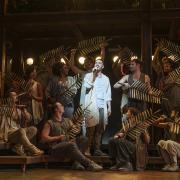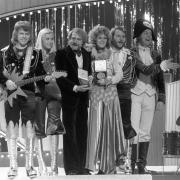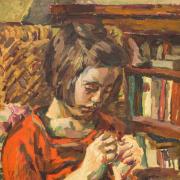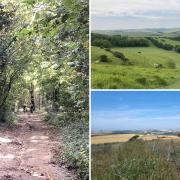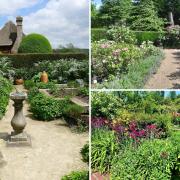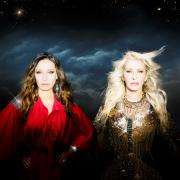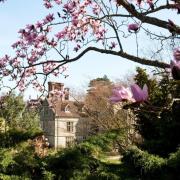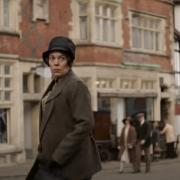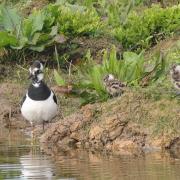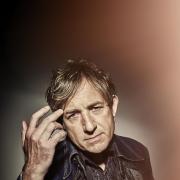Laurence Olivier was the most celebrated actor of his generation, but was also deeply flawed as an individual, argues his latest biographer, Philip Ziegler. Adam Trimingham delves into the Brighton-based actor’s complex past
Laurence Olivier was the most famous actor of his day, with millions watching him on stage and screen. Yet his latest biographer, Philip Ziegler, says that off stage he looked as if he might have worked in a bank.
“He was capable of leaving a theatre outside, when a dense crowd was waiting to greet him, and disappear round the corner without anyone realising he had been or gone,” says the biographer. Olivier himself said: “I don’t know who I am. I’ve played 200 characters in my life and know them all better than I know myself.”
His character has long eluded description, but Ziegler, a vastly experienced biographer, does better than most. He says Olivier was exceptionally talented and extraordinary as a human being in his lack of humanity, failing to connect with others except on the most superficial level. Even his children found him remote.
There was no shortage of women wanting to make love to him. He was married three times and had many affairs. The most serious of these was with the beguiling Sussex actress Sarah Miles, whom he discovered when he founded the Festival Theatre in Chichester.
At one stage he even contemplated marrying her, but did not think much of her as an actress and, while the sex was enjoyable, theatre came first. Ziegler can find no backing for the assertion that Olivier also had affairs with men, notably the American comic actor Danny Kaye.
Olivier’s talent was enormous, even in an age of gifted actors, and he easily outshone his two contemporaries, Ralph Richardson and John Gielgud.
In his prime, he was immensely physical, leaping about the stage, and part of his appeal was that the audience never quite knew what he would do next. While still acting he kick-started Chichester into life, before working on his greatest achievement, the National Theatre.
He lived in Brighton for a decade and later took the name of the town for his peerage. Yet he took almost no part in local life and was often disagreeable.
Eventually he moved to a secluded house in Ashurst near Steyning, where he spent his increasingly unhappy final years, losing both his memory and energy.
Ziegler surprisingly compares Olivier with Lord Mountbatten, saying they were both ambitious, courageous, unscrupulous, jealous and charming. Both were also immensely persuasive and only the most resolute could resist them. Both wanted to be better at what they did than anyone else.
There is one more similarity not mentioned by Ziegler. The reputations of both have dropped heavily since their deaths. Revelations about Mountbatten have made him appear vain and devious, while Olivier’s style of acting might seem dated and clichéd today.
---------------------------------
Books
The Bluebell Railway Revisited by Matt Allen; Halsgrove; £14.99 Five years ago, railway enthusiast and photographer Matt Allen produced a lively portrait of the magnificent Bluebell Railway in rural East Sussex. In this new volume he makes a return visit to record the completion of the ‘Northern extension’ project, which has taken the railway back to East Grinstead and reconnected it to the National Rail network.
The railway was originally part of the former Lewes to East Grinstead line and when closure loomed, a keen band of volunteers worked hard to prevent it being consigned to history. In 1960, when the Bluebell Railway was formed, railway preservation was a new concept, making the band pioneers of their time.
Here, in more than 140 images, Allen takes a photographic journey along the 11-mile track, highlighting key points en route, including Ketches Halt, the Three Arch Bridge and Horsted Keynes Station, as well as some of the railway’s most celebrated engines. A must for Bluebell fans.
Sussex on the Screen: A Guide to Filming in the County (1896-2012) by Daryl Burchmore; Pen Press; £8.99
Sussex has played host to a wealth of screen productions, from The Living Daylights, filmed at Beachy Head, and Foyle’s War, filmed largely in Hastings Old Town, to The End of The Affair, where locations included the Royal Pavilion in Brighton.
In this meticulously researched book, Daryl Burchmore, who has a keen interest in classic television and movies, has compiled an alphabetical list of towns, villages and other locations around Sussex which have featured on film, and outlines the early history of film-making in the county.
The list of productions is staggering, with Beachy Head and the Bluebell Railway proving perennially popular locations. Burchmore argues this is because Sussex is one of the country’s most historic and attractive counties, and has the added boon of containing many villages which are relatively unknown.
Sussex: East with Brighton and Hove by Nicholas Antram and Nikolaus Pevsner; Yale University Press; £35
Nicholas Antram takes over where the distinguished architectural historian Nikolaus Pevsner left off in this scholarly gazetteer, listing descriptions of every building of architectural importance in Sussex.
Besides grand set pieces such as the Royal Pavilion and Arundel Castle, the reader is introduced to the 12th century round tower at Southease Church and Ian Ritchie’s Eagle Rock House in Uckfield, “a remarkable geometrical study in steel and glass”.
Sadly, Antram, a former historic buildings adviser for English Heritage, died before completing this book, and the editor, Charles O’Brien, regretfully stepped in to write the introduction, singling out Hopkins & Partners’ “outstanding” opera house at Glyndebourne (1989-93) as the most important building of the last 30 years.
Pevsner argued that the Weald had been reduced to “commuters’ country”, but O’Brien is more upbeat, claiming that “careful planning controls” and the creation of the latest National Park along the South Downs have “guaranteed the special character of the landscape”.
---------------------------------
Literary Round-up
Much Ado Books in Alfriston has opened a book lovers’ Christmas shop, stocked with ‘bookie’ gifts. Handmade and hard-to-find treasures will include literary-themed jewellery, Andy Malone’s altered-book art, diaries and calendars, Christmas cards, Sheridan Quigley’s handmade ornaments, typographic mugs, Kay Hussey’s painted boxes and notions, vintage and new Christmas books and a cookbook “unlike any you’ve ever seen before”. The festive shop is open from 1.30pm to 5.30pm on week days and all day on weekends.
Much Ado also has hand-sewn and decorated Christmas stockings, which are on sale as part of their annual festive fundraiser, Prospero’s Project. This year, the proceeds will support a programme that helps children develop into self-reliant adults by providing support they are missing at home. One element of the work includes volunteers reading to and with children, who may choose to keep the books they read together.




